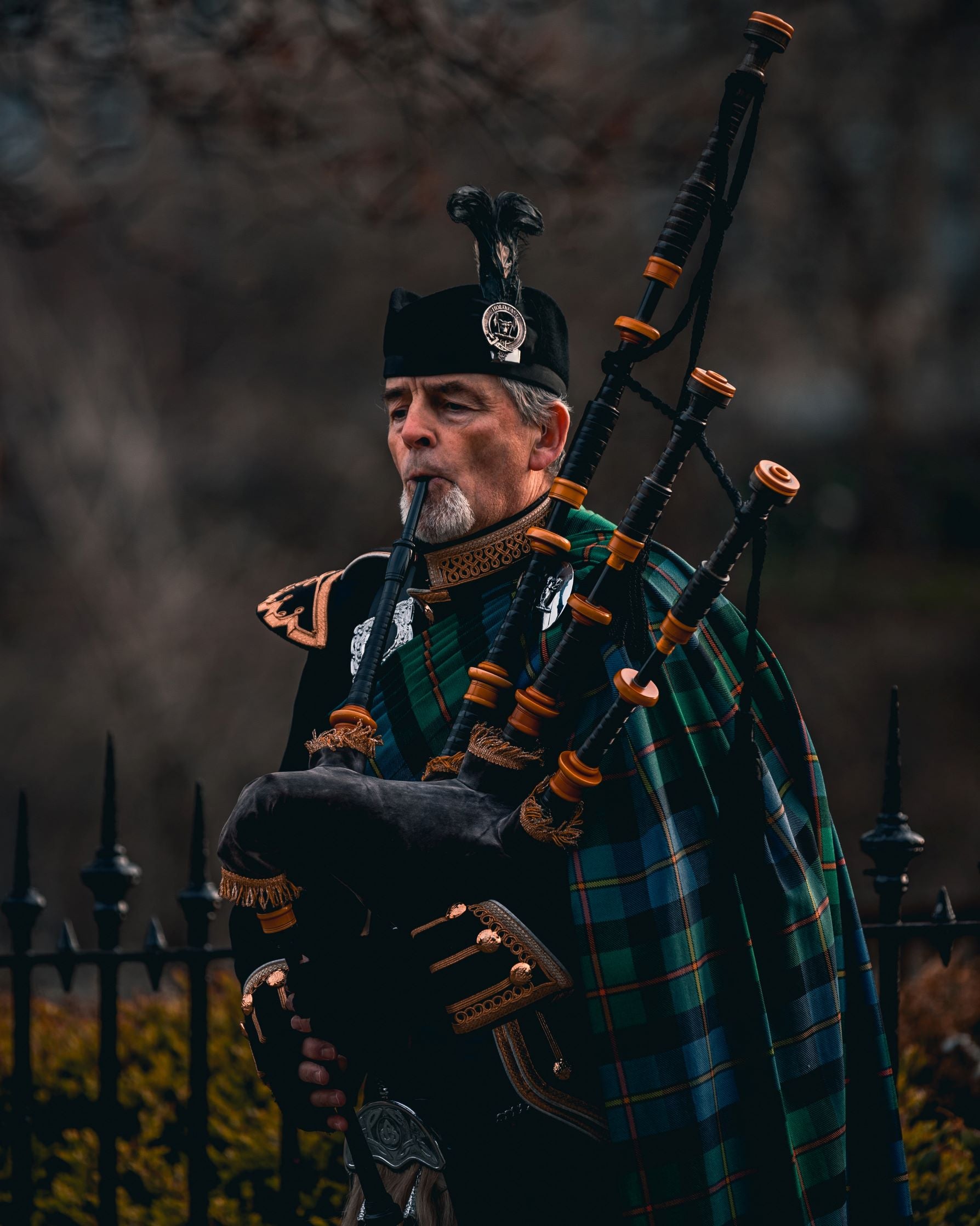What is a fly plaid and how is it worn?

A fly plaid is a traditional element of Scottish Highland wear, providing an eye-catching feature that is rich in tradition and history. Tartan fly plaids elevate the overall aesthetic of your formal attire, making you feel and look your very best.
Our kilt fly plaids are a popular choice; however, we are often asked about what exactly a fly plaid is by first-time wearers. We have pulled together a brief history of this customary fashion item as well as an in-depth explanation as to how they should be worn.
Traditional Scottish Highland Dress
Highland dress is an iconic staple of Scottish culture. The origins of Highland wear dates back centuries, with a version of a kilt outfit appearing as far back as the 16th century.
Kilt outfits have been significantly developed over time, shaping into the traditional Highland dress we see today. From full dress sporrans to kilt flashes, many separate elements have become essential to the overall look that we know and love.
Amongst these unique fashion items, the fly plaid is the most prominent, adding a spectacular flare to the Highland dress.

What is a fly plaid?
Those that are new to Scottish Highland dress often ask, ‘what is a fly plaid?’. In years gone by, the traditional kilt was often much larger and longer than it was today, with the tartan plaid being wrapped around the waist before throwing the tartan over the shoulder.
As the function and size of modern kilts evolved, less fabric was required and the extension over the shoulder was no longer necessary. In modern Highland wear, the fly plaid is an additional element of the classic outfit worn to reflect rich Scottish history without bulky excess fabric wrapping around the body.
How to wear a fly plaid
First-time wearers then begin to wonder about how to wear a fly plaid. Before the fly plaid is even worn, the tartan swatch of the fly plaid should be identical to the kilt. Therefore, it is best to order the fly plaid at the same time as the kilt to ensure they match exactly. By ordering the items separately, you cannot be sure that the dye batch or weaver is the same, meaning there may be some slight variations.
Once the tartan of the fly plaid and kilt is perfectly matched, it is time to put it on. The fly plaid is customarily worn over the left shoulder, sitting at breast level. When worn over the shoulder, the fly plaid should fall behind the wearer and hang just a small distance below the length of the kilt.
To attach the fly plaid to the shoulder of your Prince Charlie or Argyle jacket, layout the fly plaid on a flat surface before choosing a corner to rest on your shoulder. Fold the two adjacent corners inwards and turn the fly plaid over. Some fly plaids may come with one corner that is already gathered and sewn in place for this purpose, making the process simpler for first-time wearers.
You must then either place the fabric on your shoulder or pull it through your epaulette, before securing it in place with a fly plaid brooch.

Fly plaid brooches
A fly plaid can be secured using a simple safety pin hidden between the pleats of the folded corner. Throughout the evolution of the fly plaid, however, fly plaid brooches have become a fashionable choice.
A plaid brooch is not only worn to keep the fly plaid in place, but it also allows you to show off your style and showcase your heritage in pride of place above your heart. Plaid brooches are commonly available in silver or steel and often feature unique gemstones. Popular designs include Scotland’s national flower, the thistle, as well as Celtic knots and crosses that represent deep Scottish traditions.
Modern kilt fashion
Nowadays, traditional fly plaids and Scottish Highland wear are typically reserved for formal occasions such as weddings, christenings, and funerals. With thousands of tartans available, modern kilt fashion allows for more diverse interpretations of customary outfits making them easy to incorporate into chic ensembles.
From the catwalks of Chanel to storefronts of Vivienne Westwood, tartan has become a stylish trend that provides abundant versatility and adaptability outside of formal wear. For a contemporary take on modern kilts, why not switch the kilt for tartan trews and a white formal shirt, before pinning the fly plaid to your shoulder for a dramatic highlight?
Finding new ways to wear fly plaids and kilts helps to keep Scottish tradition alive and brings more attention to the exceptional joy of tartan.
Final thoughts
Fly plaids are an important part of the rich history of Scottish Highland wear, but they need not be intimidating.
Here at the Scotland Kilt Company, our fly plaids are available in an extensive range of tartans. These luxurious fly plaids are light-weight and comfortable, meaning you will be able to wear them with ease throughout your exciting event.

 Check out our Yopto Reviews
Check out our Yopto Reviews